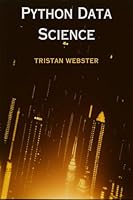
Data Science Foundations: Geometry and Topology of Complex Hierarchic Systems and Big Data Analytics
- Length: 224 pages
- Edition: 1
- Language: English
- Publisher: Chapman and Hall/CRC
- Publication Date: 2017-09-07
- ISBN-10: 1498763936
- ISBN-13: 9781498763936
- Sales Rank: #4283387 (See Top 100 Books)
“Data Science Foundations is most welcome and, indeed, a piece of literature that the field is very much in need of…quite different from most data analytics texts which largely ignore foundational concepts and simply present a cookbook of methods…a very useful text and I would certainly use it in my teaching.”
– Mark Girolami, Warwick University
Data Science encompasses the traditional disciplines of mathematics, statistics, data analysis, machine learning, and pattern recognition. This book is designed to provide a new framework for Data Science, based on a solid foundation in mathematics and computational science. It is written in an accessible style, for readers who are engaged with the subject but not necessarily experts in all aspects. It includes a wide range of case studies from diverse fields, and seeks to inspire and motivate the reader with respect to data, associated information, and derived knowledge.
Table of Contents
Part I: Narratives From Film And Literature, From Social Media And Contemporary Life
Chapter 1: The Correspondence Analysis Platform For Mapping Semantics
Chapter 2: Analysis And Synthesis Of Narrative: Semantics Of Interactivity
Part II: Foundations Of Analytics Through The Geometry And Topology Of Complex Systems
Chapter 3: Symmetry In Data Mining And Analysis Through Hierarchy
Chapter 4: Geometry And Topology Of Data Analysis: In P-Adic Terms
Part III: New Challenges And New Solutions For Information Search And Discovery
Chapter 5: Fast, Linear Time, M-Adic Hierarchical Clustering
Chapter 6: Big Data Scaling Through Metric Mapping
Part IV: New Frontiers: New Vistas On Information, Cognition And The Human Mind
Chapter 7: On Ultrametric Algorithmic Information
Chapter 8: Geometry And Topology Of Matte Blanco’S Bi-Logic In Psychoanalytics
Chapter 9: Ultrametric Model Of Mind: Application To Text Content Analysis
Chapter 10: Concluding Discussion On Software Environments







